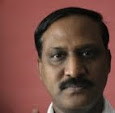Articles by Others WAITING FOR TELANGANA
by
Mallepalli Laxmiah
published in The Times of India. 8 September 2008
http://timesofindia.indiatimes.com/home/opinion/edit-page/Waiting-for-Telangana/articleshow/1967630.cms
The agitation for a separate Telangana state has entered a new phase. The people of Andhra now are not averse to the idea of a separate Telangana.They are even reconciled to losing
What are the factors that propelled Telangana Rashtra Samiti (TRS) to leave the UPA? The impression sought to be created by Congress, that TRS has lost popular support for creation of a separate state, is misplaced. The recent reverses suffered by TRS in the municipal and panchayat polls, in fact, were on account of its failure to act on its separate state promise.
However, Reddy caste lobbies, led by chief minister Rajasekhara Reddy, portrayed to the Congress headquarters that the demand for Telangana was on the wane. The formation of a Reddy-led Congress government drove the first nail into the coffin of the Telangana idea.
The Reddy caste, which ruled Andhra Pradesh for decades through Congress, will be a big loser in the event of a divided Andhra Pradesh. Reddy strongholds are spread over the southern region of Rayalaseema,
Congress leaders like Kasu Brahma-nanda Reddy, Neelam Sanjeeva Reddy, Kotla Vijaya Bhaskar Reddy, Janardhana Reddy, and now Rajasekhara Reddy, were chief ministers from non-Telangana regions.They owed their power to Reddy support from Telangana. Chenna Reddy, who hailed from Telangana, was an exception to this pattern.
He led the state after an agitation for a separate state in 1978. Thanks to the wider power structure of the Reddys, they could oust Brahmins like P V Narasimha Rao and Dalits like Sanjivayya to maintain control over chief ministership. Chandrababu Naidu, in his nine-year tenure as chief minister, demolished Reddy domination in Telangana by fielding and successfully electing non-Reddy castes.
The Congress is promoting a Reddy revival in Telangana, by distributing tickets to them. If a separate state is formed, this process will be stalled. While the issue of a separate state never came up before N T Rama Rao, the Naidu-led TDP opposed Telangana for two reasons.
A divided state would have politically diminished Chandrababu Naidu, who hails from Rayalaseema. His backward-class politics helped bolster TDP prospects in Telangana, particularly after wiping out Reddy domination in the region. By supporting the Telangana demand, TDP would have lost control over Hydera-bad.
The city's resources are now in the hands of Kamma entrepreneurs. Control over water resources in upper Telangana region is crucial for both Reddy and Kamma landlords in coastal AP. The creation of a new state would sound the death-knell for TDP in Telangana. Naidu fears losing grip over the entire state as well.
Diminished Reddy power in post-Telangana Andhra will provide space to the rising Kapu caste (similar to Kurmis of Bihar) who have already started working as the next power bloc. The popularity of film star Chiranjeevi, a Kapu, will help them grab power. Naidu has angered the powerful, numerically dominant Dalit Mala caste in Andhra, through reservations and other means.
The Mala-Kapu alignment could transform politics of the state, leaving Kammas and Reddys behind. Within Telangana, castes will regroup along fresh lines. The land-owning Velama caste, to which TRS leader K Chandrasekhara Rao belongs, will trudge carefully. Upwardly mobile backwards like Gowdas will come to the fore, with powerful leaders like Devendra Gowd, who is now with TDP.
Dalits and backward castes all over AP would not be averse to these shifts. BJP will be happy to wrest the initiative on Telangana, after its 1998
The Left, which originally opposed division of linguistic states, stuck to its stand. The CPI has a wait-and-watch position. Coalition politics at the Centre has worked against the cause of Telangana, be it the UPA or NDA governments.
(The writer is a columnist with Andhra Jyothi, a Telugu daily. )





